Biomolecular nanomotors for precision medicine
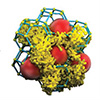 Researchers explore nanomotors as a biomolecular toolbox to propel precision nanomedicine forward, introducing various propulsion mechanisms to advance diagnostics, drug delivery, and cancer treatments.
Researchers explore nanomotors as a biomolecular toolbox to propel precision nanomedicine forward, introducing various propulsion mechanisms to advance diagnostics, drug delivery, and cancer treatments.

 Subscribe to our Nanotechnology Spotlight feed
Subscribe to our Nanotechnology Spotlight feed
 Researchers explore nanomotors as a biomolecular toolbox to propel precision nanomedicine forward, introducing various propulsion mechanisms to advance diagnostics, drug delivery, and cancer treatments.
Researchers explore nanomotors as a biomolecular toolbox to propel precision nanomedicine forward, introducing various propulsion mechanisms to advance diagnostics, drug delivery, and cancer treatments.
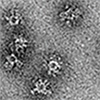 The potential of nanotechnology in the development of vaccines for animal infectious diseases is immense and with continued research and development, nanotechnology could revolutionize the field of animal vaccine development, offering more effective strategies in combating animal infectious diseases.
The potential of nanotechnology in the development of vaccines for animal infectious diseases is immense and with continued research and development, nanotechnology could revolutionize the field of animal vaccine development, offering more effective strategies in combating animal infectious diseases.
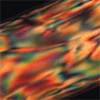 Liquid crystals show promise for innovative biomedical applications like drug delivery, bioimaging, tissue engineering, implantable devices, biosensing, and wearables. The unique properties of these dynamic materials at the interface of solid and liquid could improve human health.
Liquid crystals show promise for innovative biomedical applications like drug delivery, bioimaging, tissue engineering, implantable devices, biosensing, and wearables. The unique properties of these dynamic materials at the interface of solid and liquid could improve human health.
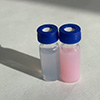 New research reveals that the fundamental processes driven by copper are consistent across both inflammation and cancer metastasis. This newfound understanding of the influence of copper on cellular plasticity may pave the way for innovative therapeutic strategies in the future.
New research reveals that the fundamental processes driven by copper are consistent across both inflammation and cancer metastasis. This newfound understanding of the influence of copper on cellular plasticity may pave the way for innovative therapeutic strategies in the future.
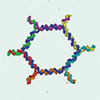 Scientists have developed an unprecedented artificial intelligence-driven tool that can predict the immune responses of human immune cells (specifically peripheral blood mononuclear cells) when they encounter nucleic acid nanoparticles or other therapeutic nucleic acids.
Scientists have developed an unprecedented artificial intelligence-driven tool that can predict the immune responses of human immune cells (specifically peripheral blood mononuclear cells) when they encounter nucleic acid nanoparticles or other therapeutic nucleic acids.
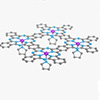 Scientists have designed a novel biocatalyst as an artificial antioxidase to improve stem cell transplantation outcomes and offers an efficient, multifaceted, and robust artificial antioxidase for broad-spectrum ROS scavenging and has the potential to enhance stem cell-related therapies and address various ROS-mediated diseases.
Scientists have designed a novel biocatalyst as an artificial antioxidase to improve stem cell transplantation outcomes and offers an efficient, multifaceted, and robust artificial antioxidase for broad-spectrum ROS scavenging and has the potential to enhance stem cell-related therapies and address various ROS-mediated diseases.
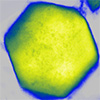 Researchers have developed an effective nanomedicine for catalytic ROS-scavenging and ultrafast healing of inflammatory wounds. This groundbreaking work holds the potential to pave the way for developing artificial biocatalysts to treat chronic inflammatory diseases, ultimately improving the lives of millions of diabetic patients worldwide.
Researchers have developed an effective nanomedicine for catalytic ROS-scavenging and ultrafast healing of inflammatory wounds. This groundbreaking work holds the potential to pave the way for developing artificial biocatalysts to treat chronic inflammatory diseases, ultimately improving the lives of millions of diabetic patients worldwide.
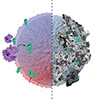 A timely review covers the current state of protein corona research in nanomedicine, highlights challenges in research methodology and characterization, and discusses the role of artificial intelligence in advancing the field.
A timely review covers the current state of protein corona research in nanomedicine, highlights challenges in research methodology and characterization, and discusses the role of artificial intelligence in advancing the field.